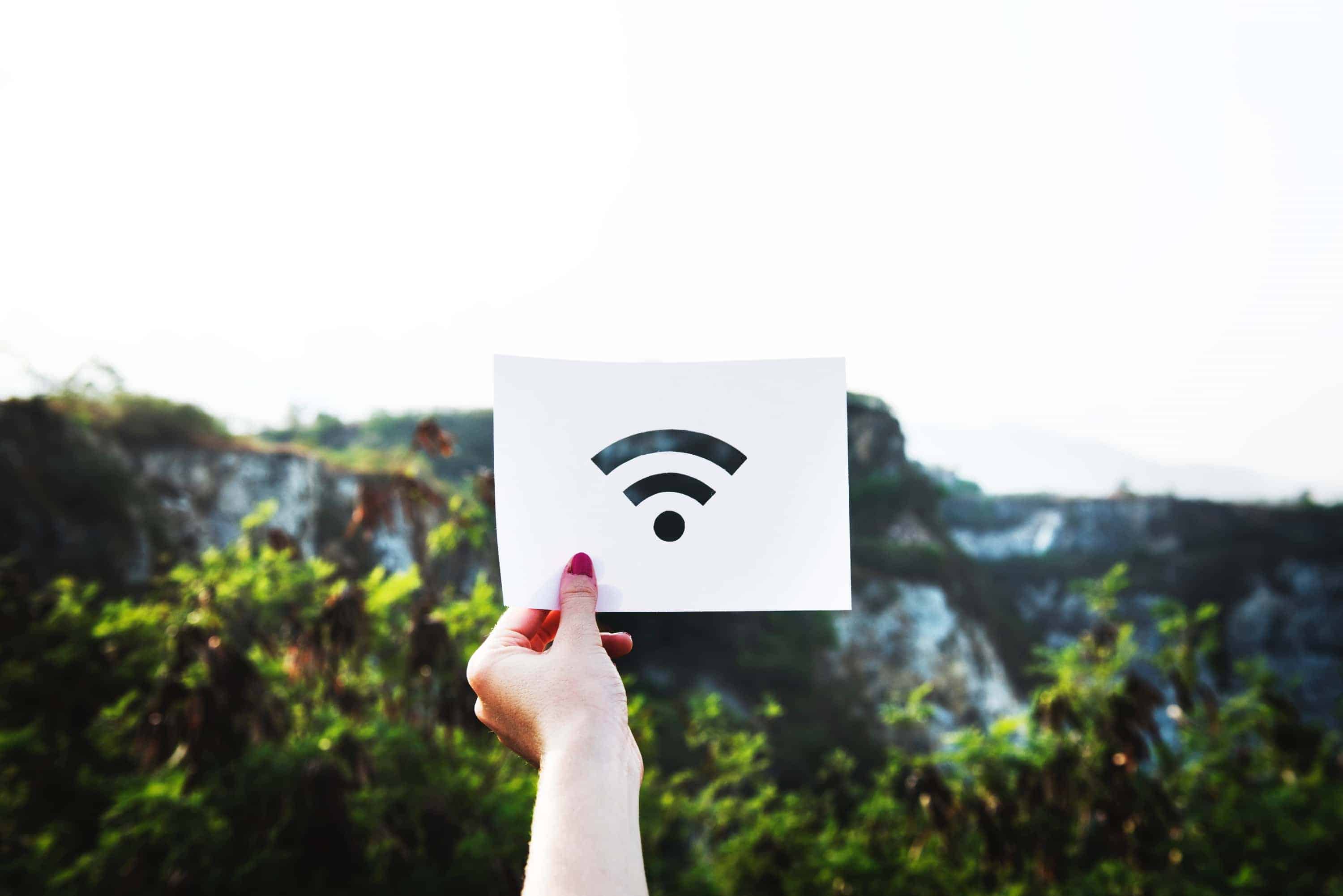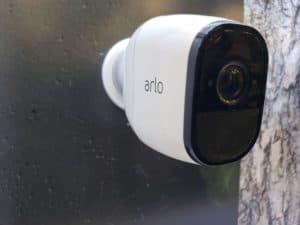Smart Home Networks : The Ultimate Guide

* We may earn a commission for purchases made using our links. Please see our disclaimer here to learn more.
Wether you’ve never built a smart home network or you are a pro, you’re probably going to at least like this guide. Do you need to come up with ways to secure your smart home? Do you think there’s a ghost living in your smart home? Is your TV coming on when you didn’t ask it to? Then you need this guide.
Smart home technology has brought on a whole new world of potential network security issues. Even for the experienced user like myself. Not only that but I’m sure you’ll have questions about weather or not your wifi will handle the workload of a smart home network.
But there are several things you can do to prevent it from ever being something you need to worry about. Let’s start with security.
Lock down the router
Hackers always seem to find ways to get around this if they really want to. But there are too many unprotected routers running around out there, to begin with.
You need to start by making sure that you have at least completed these basic security steps to lock your router down and secure your smart home.
- Make sure you have changed your default login for the router backend.
- Also, make sure you have changed the default credentials for the Wi-Fi as well.
- Make sure you are using WPA2 Encryption for your Wi-Fi password.
- Update the firmware on your router.
- Use MAC address filtering to make sure that someone isn’t just wandering around your network.
Use Two-Factor authentication
Good password management is extremely important to secure your smart home. However, if you add an extra authentication factor it can make your IoT devices much more secure from being hacked.
You could use a security key that is received on your phone. You could also use fingerprint recognition in some cases to keep intruders away from your smart devices and all those apps that you want to use to control them.
Many smart home device apps already offer two-factor authentication, also known as 2FA, which you will usually find in the settings section of the app.
There is one really good thing about doing this. Even IF someone were to get your username and password from one smart device, it would stop them from infecting or otherwise attacking the rest of your network.
Use Antivirus Religiously
We all know the importance of a good antivirus in this day and age. If you don’t then you have been living under a rock. I personally find Antivirus software more than a pain.
So I suppose it is just one of those necessary evils that we have to live with. It is definitely important to have some kind of antivirus on the smartphone or computer that is being used to control IoT devices.
Hackers are no different than the average joe. They want the easy way out too. If a hacker can access your smart thermostat, for example via a malicious app rather than hacking the device itself, believe me, you, he’s going to go with the app.
Antivirus programs are very important to the survival of any smart home. They add another layer of security with built-in firewalls that let you decide which apps can or cannot run on your smartphone or computer.
I’m not saying that antivirus is the end all, be all for network security. However, not having almost guarantees that you will be hacked by some idiot sooner rather than later.
Malware Protection Devices
Malware Protection is just that one extra layer of security. While your Wi-Fi network might be secure, it won’t stop certain forms of malware from sneaking through. A unified threat management system might be the way to go. It is much more sophisticated than just using a firewall.
Actually it’s a monitoring system that will monitor all of the devices on your network and block known attempts to try to compromise the devices, but more importantly, it will give you a heads up when one of your devices is trying to do something that it shouldn’t.
Although this is on the higher priced side. It may be a valuable tool in your toolbelt if you are under attack and help secure your smart home network.
Don’t use public Wi-Fi

Just don’t. Hackers can have a hay day on your devices when you connect to public Wi-Fi. You need to turn off the “automatically connect” setting on phones. I don’t use the public Wi-Fi anywhere personally. The last thing I need is little Jimmy from the library showing up on my network wreaking havoc.
There are safe alternatives though. For example, you can use wireless hot spots from your cell phone or devices like a Verizon Jetpack. If you want to secure your smart home network it’s important to stay off public wifi.
Only use known devices
I am a huge fan of this. Primarily for my network security sake. Companies like Ecobee, Blink, and just about anything from Amazon not only have lots of cha-ching invested in the development of IOT devices, but they have their reputations on the line.
Trust me when I tell you not to skimp. I know the name of my blog is DIY Smart Home Guide. Well, doing it yourself is fine, but skimping to save money is not the way to do it when you are planning out a smart home is probably not the way to go.
If you spend a little more to avoid the off brands you’ve never heard of it will help lower the risk of someone getting access to your smart home security camera. There are enough things to worry about in this world.
You don’t need your information getting into the wrong hands. Hackers are pretty smart. But the odds that a large, well-established company will ignore any lingering network security issues is more unlikely than the little guy. Better safe than sorry.
Secure Your Smart Phone

Everyone already knows that you should as of now be using strong passwords on every one of your smart devices. So many people still don’t utilize passwords to lock down their cell phones.
In fact, 33%, was the last number according to the last Norton Cybersecurity Insights Report. All IoT gadgets are controlled by a cell phone application, so cell phones have turned out to be a core focus for hackers.
Put yourself in this position for a minute. Let’s say you had a smartphone that wasn’t password protected and it fell into the wrong hands. Sadly for you, you never logged out of the app that unlocks your front door. Whoopsie!
Now you understand the importance of locking that smartphone down. Personally, and I know this is a pain, I read the privacy policy of the apps I install to see what types of data the app will be accessing from my phone. I want to know what data it will collect, and what will be done with that data. But hey, maybe that’s just me.
Prioritize Updates

My daughter’s dance teacher always tells the kids. “You get what you get and you don’t get upset”. So I can’t stress this enough.
It’s important to stay up to date on any software updates for the products you own and use. If you don’t, then the answer you will get from the company is more than likely going to be, “sorry, not sorry”.
If you fall behind on software updates it doesn’t just mean you are going to have a few glitches in the system, it can put your entire network security at risk. Developers typically put out updates to stop any gaps that were in the original coding they used to build the software.
This is just common sense nowadays anyway. Your antivirus/malware software needs to be updated. Windows needs security updates constantly. It stands for just about every item on your network. So stay alert on this one.
Manage Your Passwords
Ohhh, your not one of those people are you? Please tell me that all of those pretty new smart devices you just bought still have their default administrator password! I mean, this could include things like your Smart TV or even Wi-Fi printers.
I can go google the model number of any device and find it’s default username and password in seconds. So don’t mess around when it comes to this. It’s an easy in for a hacker.
Make sure you change these passwords to something really hard. Chances are you’ll not need the username or password again anyway. Just do it, and that way you don’t have to worry about it down the road.
Go With A Cloud Service

If you are one of those people who doesn’t have the time or just can’t be bothered with securing your own smart network. Then cloud services are designed to help you manage your home-automation devices.
These services, like Qualcomm or Vivint, typically cost money and while some people are still concerned about privacy issues. In most situations, these companies do a better job of securing these devices than the average user can.
If you are ok with handling the security of your smart devices yourself then you don’t need to bother with this. The thing is, you really don’t need to be tech-savvy. You just need to stay on top of it.
Use A Separate Network
One of the easiest and most tech-savvy ways to keep your network secure is by using your smart devices on a separate network. My Netgear R7000 has two networks built right in, as do many of the routers you will buy today. This lowers the risk of hacking across smart devices as well. But you really have two options when it comes to this.
The other way is to buy an additional router and set that up with your existing network. If you put your smart devices on a different network from things like home computers, then you can help yourself greatly and avoid identity theft.
Here again, you really don’t have to be the most tech-savvy person in the world. But if you need a hand to get this going I’m sure there are plenty of people around you who could help you get this set up in a matter of minutes.
Use A VPN
This is one of my favorite ways to keep myself invisible to hackers. The game of online privacy and security has changed. In the last few years, in particular, I have seen a large upswell in people using VPN’s (virtual private networks).
Every time one of the devices on your network goes out on the internet to do anything it opens up the risk of being hacked.
I strongly suggest an integrated VPN for your router. This will greatly help you prevent hackers using exploits on your smart devices. It not only changes your virtual location on the planet, it also gives you military-grade encryption for anything on your network.
Personally, I’m a big fan of IPVanish. They are easy to use and easy to set up. But there are many many others out there. However, I’m not really a fan of using the free ones, as they rarely work in a consistent manner to protect anything.
Use Bitdefender
One of the easiest fixes for this problem is to get yourself a Bitdefender box.
This small hardware-based security appliance is designed in a way that has a network firewall, (IPS) intrusion prevention system, vulnerability scanner and an antivirus solution all in one!
The reason I even mention it is that one of my close friends has one, and they work very well at deterring almost any attacker for several reasons. It plugs into your router and secures all of your Wi-Fi and internet connected devices. This uses a combination of hardware, software, and cloud protection. It’s easy to use and set up for literally anyone and their support is outstanding.
The Bitdefender does carry a $99 annual fee. However, if you want the “easy way out”. Then this may be the solution for you. You can check it out over here on Amazon.
What Is The Best Wi-Fi For My Smart Home Network?
Maybe it’s not your smart home network WiFi! How fast does your wifi have to be for smart home automation? I’ve seen a few people on the interwebs asking this question and the answer is this.
Your internet speed will only be affected by the video that is being transmitted over the network. So generally unless you are streaming a lot of video over the network you shouldn’t have a problem with speeds on your smart home network.
Types Of Speeds
First, we need to clear something up. Internet speed and WiFi speed are two entirely different things. The Internet speed is referring to your networks communication with outside world and Wi-Fi Speed is only referring to communications between devices on your Wi-Fi home network internally.
Typically your home internet has 2 different speeds. One for uploading data and one for downloading data. If you are referring to streaming video to somewhere outside of your house, then your upload speed is what you really want to look at. Usually, it is about one-tenth of your download speed.

Why Speed Matters
The speed of your internet connection matters for sending the video somewhere outside of your network and not much of anything else. Reliable internet, on the other hand, can be much more important. Of course, this applies both to the external internet connection and to the internal WiFi.
You could run into hiccups, with different types of old wiring in the walls or brick walls that hinder the signal of your home Wi-Fi. That will put a damper on your day for sure. The good news is, you can buy a Wi-Fi extender to resolve that issue.
If you just have unreliable internet then there really isn’t much you can do about that. Other than the obvious, which is to complain to the service provider you are subscribed to or switch to another provider.
Wi-Fi Components Matter
Some home automation components simply refuse to work if they aren’t connected to the internet. You could opt to get a local hub like Vera which always works regardless if the internet drops off. The other nice thing is that it uses a very small amount of bandwidth to access it remotely when you are connected to the internet.
If reliability is a concern, however, you should avoid the more cloud-based devices and look more at ones that are not as reliant on the internet.
With all that said, you shouldn’t let your internet connection hinder you. Osram has the Lightify connected bulbs, which can create scenes, groups, and schedules. No internet needed, and users can set them off with motion sensors or wall switches.
The Internet is only necessary for going through the setup with new bulbs, syncing up smartphones and tablets, connecting with other online services, and controlling the lights remotely.
Should I Switch To A Mesh Network?
Literally, every month right now there is another company making a new mesh network that gets thrown into the market!
Are they all they are cracked up to be?
Absolutely! I would tell anyone who is having connectivity problems with their router that they need to get a mesh network.
Why? You might ask. Mesh networks are much more powerful wifi systems that give each room of your house a strong, reliable Wi-Fi signal, supplying optimal performance for all of your smart home technology.
Some of the more reputable companies in the mesh network space are Eero, Velop, Orbi, Google, and Samsung.
What are the differences between each? Well, that is worthy of a separate blog post all by itself. If you really want more information on the topic you could check out my article on the best mesh networks.
At the time of me writing this, I personally feel that the Eero is the best choice for most people’s needs.
Mostly because they use multiple nodes or access points to create a mesh network that will cover your entire home.
You plug one Eero into your modem (just like a router), and the other Eero units can just be plugged into a standard outlet. The units need to be spaced a least 40 feet apart.
The nodes can be set up and paired with each other pretty easily by using the dedicated app, and you’ll end up with an insanely fast network right out of the box.
However, it is notable that mesh networks are not cheap! You are going to spend at minimum $250 to get started and the pricing goes up from there.
Other Speed Considerations
Really, you should consider spending a little extra on a better, more high-end router no matter what you do, if you are going to spend all that money on home automation, to begin with.
I mean even if you aren’t using a ton of video over the internet these can provide you with a way to increase the signal inside your house. Plus you’ll gain a healthy measure of security which will ensure hackers aren’t using your web-enabled toaster for a web server.
As always, I recommend researching a variety of vendors and systems before choosing one. You can also check your internet speed with speedtest.net before you set up an array of video cameras part of your smart home network. As I mentioned earlier, smart home cameras tend to use more bandwidth than any other smart home product you’ll have.
Conclusion
I had no problem streaming the video from my Blink XT cameras when I was on vacation in Florida. I’m not saying that you’ll never have issues with your internet connection if you get a particular kind of camera, don’t get me wrong. But my experience is that with a 10MB upload speed I had no problem at all viewing my cameras.
So be aware of what you have for upload and download speeds via your provider. That will make all the difference in the world when you aren’t home and you want to be able to view your cameras.
If security cameras are not on the list of things that you need to have hooked up, then I really wouldn’t worry about internet speed at all.
Personally, I find all of the solutions above to be effective. But the goal of anyone with a smart home network should be to secure it as much as possible.
I implore you to take a multifaceted approach and use several of these techniques together. You can never be too careful when it comes to securing your network.











